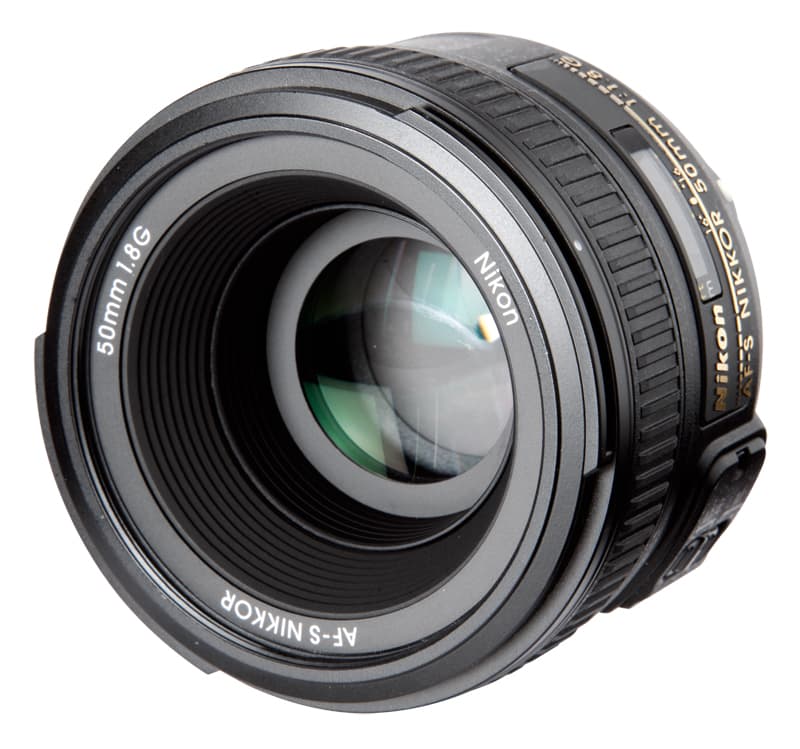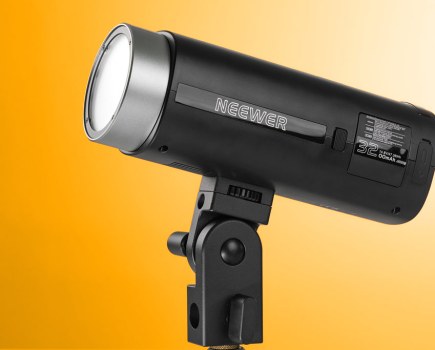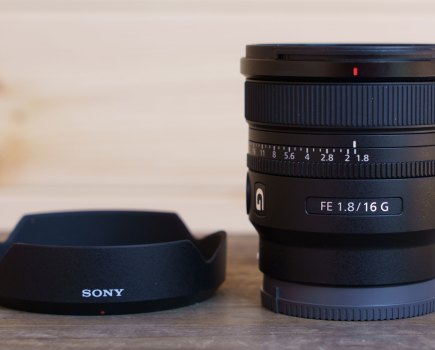When Nikon introduced the AF-S NIKKOR 50mm f/1.8G in 2011, its aim was to provide a fast aperture 50mm lens for image makers of all genres at an affordable price. Apart from optical enhancements the lens enjoyed significant mechanical developments including the provision of Nikon’s Silent Wave AF motor for whisper quiet autofocus operation. It is still current in 2023 which is a testament to the longevity of the lens’ optical and mechanical design.
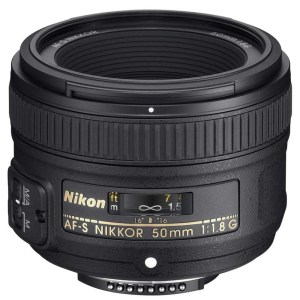
The Nikkor AF-S 50mm f/1.8 G features a construction of seven elements in six groups and has a 45cm minimum focus distance
Buy this lens new and it will cost $277/£229 with used examples priced around $133-£110 for one in like-new condition. Excellent condition examples cost slightly less (£105).
Back in 2011, its launch price was $241/£199 so in real terms this lens is still great value. It also made AP’s selection of the Best lenses for Nikon DSLR cameras so check out our thoughts. You can also read how this lens performed when compared with 11 other 50mm lenses of different brands here.
Special edition version
Nikon introduced an optically identical special edition version of this lens which was cosmetically styled to suit the retro-styled Nikon Df and the pair was announced in 2013. The AF-S NIKKOR 50mm f/1.8G Special Edition is still available with used examples fetching $174/£144 in like new cosmetic condition.
The final two Nikon 50mm lenses designed for its DSLRs include the AF Nikkor 50mm f/1.8D, a low cost, compact prime lens which first hit the market back in 2002 and sells for $192/£159 new. If you have the budget and need the extra speed, there’s the AF-S NIKKOR 50mm f/1.4G but the extra half stop comes at a price and this lens costs $556/£459 new. This lens was launched in 2008 so actually pre-dates the 50mm f/1.8G version tested here.
Features
Perhaps the first noticeable difference in the new 50mm f/1.8 lens is that it is a G-series model, meaning that it doesn’t have an aperture ring. Although there are still a handful of older D-series optics in Nikon’s line-up, the vast majority of the company’s AF lenses are part of the G series, which as standard don’t have aperture rings.
Although this will be frowned upon by some, G-series lenses can be used with all Nikon AF cameras, whether film or digital, going back as far as 1986. However, they are not compatible with manual-focus cameras.
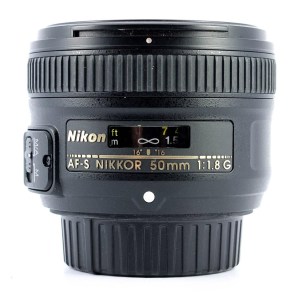
Being a G-series model you’ll notice there is no aperture ring
Internal AF motor
One major advantage of the new lens comes via the introduction of an internal AF motor. The two previous AF versions of the 50mm f/1.8 optic rely on a motor in the camera to drive an AF screw in the lens.
This means that neither the original nor D versions of the 50mm f/1.8 lenses work on the entry-level Nikon DSLRs, such as the D40, D40X, D60, D3000, D3100, D5000 and D5100. The fact that the new AF motor is a Silent Wave Motor (SWM) is an added bonus, meaning the new lens should be fast and quiet when focusing – great news for those wishing to shoot video.
The optical changes
Of course, it is the optical changes that will most interest photographers. The introduction of a new aspherical element takes the construction of the 50mm f/1.8G to seven elements in six groups, and is designed to reduce comatic and chromatic aberrations. These optical distortions have previously been most prevalent when shooting with a large, fully open aperture, and are the Achilles’ heel of many a 50mm f/1.8 lens.
Designed primarily for digital camera sensors, the new lens has been coated using Nikon’s Super Integrated Coatings, which should help to improve colour accuracy and contrast, and reduce ghosting. The aperture blades themselves have also been improved and are now curved to create almost circular bokeh, compared to the heptagonal shape created by the older lens aperture designs.
So, while the emphasis may be placed on the inclusion of an aspherical element, there are a number of other small changes that should significantly improve the performance of the new 50mm f/1.8G lens.
Build and handling

Due to the built-in AF motor, the new 50mm f/1.8G lens is larger than the two previous 50mm f/1.8 AF optics. The larger diameter of the new lens means that the filter thread is now 58mm, as opposed to 52mm on the older versions, and its weight is fractionally increased, from the 160g of the 50mm f/1.8D to 185g.
The increased size of the G-series lens means the rubberised manual-focus ring is also larger than on previous models. But this is something of a paradox: with no aperture ring on the lens, it cannot be properly used on a manual-focus Nikon camera. However, it does prove useful when shooting in live view to ensure the subject is precisely in focus.
Despite being one of the cheapest Nikkor lenses, the 50mm f/1.8G doesn’t scrimp on build quality. It has a metal lens mount that is weather-sealed by a rubber surround covering both the lens and body mounts when the optic is attached to the camera. Sealing the connecting mounts in this way helps to prevent the incursion of moisture and dust.
Like most other Nikkor AF lenses, the 50mm f/1.8G features a switch on its side to change between two focus modes: M/A and M.
When switched to M/A, the lens will focus automatically and then, with the shutter button still half-depressed, you can adjust the focus manually. When switched to M, AF is disabled completely and the lens becomes fully manual focus. Again, this feature was not present on the previous incarnations of this lens.
Considering its price, the 50mm f/1.8G lens has a premium build quality. About the only feature lacking is Vibration Reduction, but this is largely unnecessary in a lens of this focal length and such a large maximum aperture.
Focusing
With its internal Silent Wave Motor, the first thing that is apparent when using the 50mm f/1.8G is how quiet the lens is when focusing compared to its predecessors. Without the buzz of an AF screw driving the lens focus mechanism, there is a noticeable quietness.
The low volume gives the impression that the 50mm f/1.8G focuses faster than the previous AF versions of this lens, but it is just that – an impression. Focusing on a subject a few feet away, and then to infinity, took the same amount of time regardless of which version of the lens I used.
When using the Nikon D3X professional-level DSLR, I found that all of the lenses quickly snap into focus, making the new model a great choice for documentary images and travel photography. Its 75mm equivalent field of view on a Nikon DX-format (APS-C-sized sensor) DSLR makes it a nice short-focal-length portrait lens.

When shooting wide open at f/1.8, the lens gives a very shallow depth of field
Image quality
There are three main benefits to using an f/1.8 lens: the large aperture allows you to shoot in low-light conditions; the large aperture will produce a very shallow depth of field, which can be used creatively; and the aperture can be closed to f/2.8 or f/4 for optimal performance, but continue to offer a shallow depth of field.

The Nikkor f/1.8G lens is ideal for low-light portraits
While half the fun of 50mm f/1.8 optics is using them fully open, this is also when they will optically be at their worst.
Evolution of design
Looking at all four of the Nikkor 50mm f/1.8 lenses, it is clear to see the evolution in the lens design. The new G series optic has the least coma and chromatic aberrations of all of the lenses – presumably is a result of the new aspherical element.

The Nikkor 50mm f/1.8 lenses: Top Left: AF-D. Top right: the new G series. Bottom left: original AF. Bottom right: manual E series
The improved multi-coating of the 50mm f/1.8G has also boosted performance, adding a good level of contrast compared to past lenses. This has helped to increase image definition, again, particularly when one is shooting at f/1.8.
It is, of course, image sharpness that all lenses will be judged by, and in this regard the 50mm f/1.8G performs extremely well. Tested using the 24.5-million-pixel Nikon D3X, the new lens resolves around the same amount of detail as its predecessor but produces better contrast and less chromatic aberration at wider apertures. As you would expect for a fixed-focal-length lens, it is extremely sharp, picking up very fine details with impressive clarity.
However, the new lens does have a few slight flaws, including a little more barrel distortion than with previous versions. This should not be too much of a concern for photographers, especially those using cropped DX-format (APS-C-sized) sensors, as these use the centre of the lens where any curvilinear distortion is far less noticeable. The distortion is also very easily corrected in software.
Vignetting is also present when the lens is at its widest aperture, but once again it is not severe and is easily corrected, so it will not be an issue for those shooting with DX-format Nikon DSLRs.
Resolution

All of the resolution chart images were taken on a 24.5-million-pixel Nikon D3X. Whilst the lenses can resolve an almost identical resolution at their optimum aperture, the latest G series lens is slightly sharper when fully open, and shows less chromatic aberrations and coma. However, the other lenses all stop down to f/22, compared just f/16 on the new G series lens
Our verdict
Nikon DSLR users wanting a nicely priced standard prime could do worse than go for the Nikon AF-S NIKKOR 50mm f/1.8G. It proved a capable optical performer turning in images with good contrast, reduced chromatic aberrations and high sharpness. It handles well too with the lens’ Silent Wave Motor delivering fast, very quiet autofocusing.
There are few lenses that AP would suggest photographers of a particular brand should own, but the Nikkor AF-S 50mm f/1.8G is one of them. With a street price of around $277/£229, it is leading value and makes a fine partner for models such as the Nikon D780 and Nikon D850 as well as older F-mount cameras.

